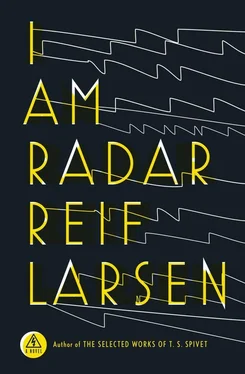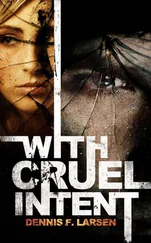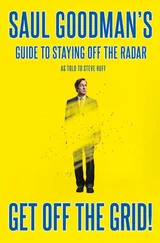Her many late nights reading textbooks and obscure dermatological articles had turned her into a bit of an expert in the field, and she had already familiarized herself with Dr. Fitzgerald’s many impressive achievements. After two years in the Army, a fellowship at Oxford, and a series of high-profile research projects on melanoma tumor growth at the Mayo Clinic, he had become, at age thirty-nine, Harvard Medical School’s youngest chaired professor. Now, twenty years later, he had just released a revolutionary schema to classify the color of skin. Designed primarily for dermatologists to diagnose skin types, Fitzgerald’s classification system was an attempt to update the largely problematic Von Luschan chromatic scale from 1897, which separated all human skin tone into thirty-six tiers. In the first half of the twentieth century, “respected” anthropometrists like George Vacher de Lapouge and Carleton S. Coon had drawn upon Von Luschan’s scale in order to categorize and sublimate racial populations within the extremely dubious discipline of “race science.” Following the Holocaust and the events of World War II, Von Luschan’s scale had largely been abandoned by the scientific community.
Fitzgerald’s system, by contrast, jettisoned such nuanced and largely subjective differentiation for a much more generalized six-point scale, focusing not on racial categorization but rather on the skin’s responsiveness to UV light, ranging from Type I (scores 0–6), “pale white; always burns, never tans,” to Type VI (scores 35+), “deeply pigmented dark brown to black; never burns, tans easily.” To his credit, Dr. Fitzgerald appeared well aware of the great potential for misuse of his schema. In a 1976 Archives of Dermatology editorial, in which he elucidated his motivation for creating such a scale, Dr. Fitzgerald also issued a warning, which Charlene had underlined in red pen: “Given the destructive history of trying to classify a person’s race based upon various phenotypical attributes, under no circumstances should the Fitzgerald scale be mistaken for any kind of comprehensive racial classification. . [Appearance] alone does not dictate an individual’s reaction to ultraviolet radiation nor his or her membership in any racial grouping. . [The] clues to our composition, more often than not, lie beneath the surface” (Fitzgerald 1976, 142).
“You,” the doctor said to Radar on their first visit to Boston as Radar sat in his lap, wondering at the pad of the doctor’s stethoscope. “ You are the most special person I’ve ever met.” He twirled his hands in the air: one finger became two, and then two became one. A simple metamorphosis that made Radar giggle in amazement.
Radar was comfortable with Dr. Fitzgerald from the start, but then he was comfortable around most. Though he was only two and a half, his short life had been one of constant medical inspection, and Radar had become pliable in a doctor’s hands. He had come to expect these intrusions into his person, for he had known no other existence than that of the examined. Perhaps because of this, he remained a silent child. Even his cries were fleeting, muted affairs, as if he was reluctant to disrupt the world around him.
“This is fine,” said Dr. Fitzgerald. “Many children take a while to find their voice. My mother always told me that I didn’t speak until I was three. And you know what? Those were the happiest days of my life. What’s the rush to join the chorus? Most of the time, we say nothing of consequence.”
During their second visit, after a day of testing basic reflexes, blood work, and UV tests, Radar fell asleep on the doctor’s examination table. He appeared at peace, forgiving of all trespasses, and as they admired him, the doctor spoke lovingly: “‘Oh, the nerves, the nerves; the mysteries of this machine called man! Oh, the little that unhinges it, poor creatures that we are!’”
Charlene stared. A button depressed.
“Dickens?” she ventured.
He nodded. “ The Chimes . He’s a well I return to often.”
This led to a surprisingly impassioned back-and-forth on which was his best work (he: Bleak House; she: Great Expectations ) and whether or not the serialized novel could ever be revived. It was a literary cauldron she had not stirred in years. The talk of books quickened her pulse and dampened the divot just above her lip.
She sat back, marveling.
“What is it?” said the doctor.
“I just hadn’t expected this. . It’s not usual that you talk about these things with a doctor,” she said. “And I’ve met quite a few lately. I thought you were all. .”
“What?”
“Boring?” she ventured.
He laughed. “Most of us are, I’m afraid. You know, it’s funny, but I find that books are essential to my profession. I’m a better surgeon if a story has its claws in me. All I need is a little dose of Melville or Dickens and his dirty alleyways, and my scalpel grows steady.”
She had a vision of him lounging in his surgeon’s gown between surgeries, his feet thrown up on the operating table as he savored the last few pages of Bleak House.
“I know I shouldn’t admit it,” she said, “but a part of me always struggled with Dickens. Sometimes it feels like he’s just trying so damn hard. His characters aren’t real, you know what I mean? They’re like these little parts of a machine. Like that man who just spontaneously combusted in the middle of the book—”
“Krook.”
“Yes, Krook. That always bothered me. I mean, it’s so careless to make a character disappear like that. Either he wants us to know that it’s just a novel and he’s in total control or he just wants to annoy us for caring.”
The doctor smiled. “As a man of science, of course, I would find it highly unlikely that a person could simply combust into thin air without provocation. . and yet. .” He paused, thinking. “The distance between the world within the book and our own world must be exactly right — it cannot be too near or too far. That distance is what I savor: Krook combusts. We see him combust, and his combustion gives me courage. I can walk around it. I can run my hands beneath it. The combustion is here, and I am there. Do you know what I mean?”
“Not really,” she said, though she knew exactly what he meant.
He nodded. “If I show you something, will you promise not to laugh?”
“Well, I can try,” she said. “I can’t promise. I tend to do the opposite of what I’m told.”
He bent down and retrieved a typewriter from beneath his desk. Then a tall stack of paper covered in print. Finally, a thick burgundy book. A flicker of the familiar ran through Charlene. He slid the stack of pages over to her.
“I haven’t shown this to anyone before,” he said. “Not even my wife.”
She read the first line aloud: “Happy families are all alike; every unhappy family is unhappy in its own way.”
She looked up. “ Anna Karenina.”
“The greatest novel ever written,” he said. “Okay — we can debate it.”
“No,” she said. “I agree.”
“Well, then. We don’t have to debate.”
She glanced through the stack of pages. It was the entire novel. Typed out, word for word.
“What is this?” she said. How had he known? This book, of all books.
“It’s a little crazy, I admit, but I suppose I wanted to see what would happen to that distance if I wrote the book myself.”
“You’ve retyped the whole thing?”
“Oh, no. It isn’t finished,” he said. “I’m a slow typer.”
She stared at the pages. She could see places where he had whited out his mistakes. The words bent and swayed in her vision. She had read these words so many times before, but she had never seen them like this. Now they felt entirely alive, ready to jump off the page and fight her with their kinetic energy. She flipped to the last page. The story cut off in midsentence. Why had he not bothered to even finish the sentence? She touched the spot where the words ended, rubbing the paper, as if she could invoke whatever comes next.
Читать дальше












